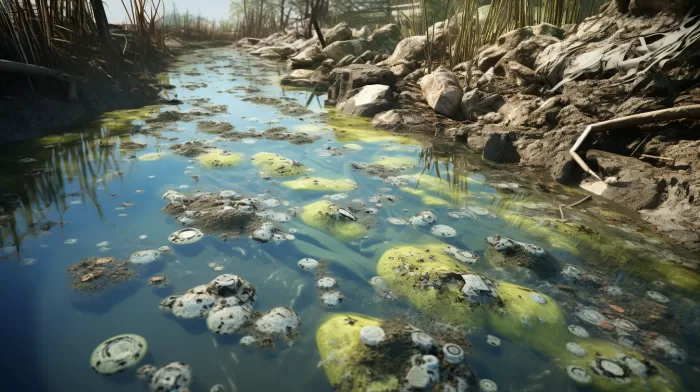When you think about germs, the first thing that might come to mind is probably your efforts to avoid them by using antibacterial products.
Ironically, by using such products, you are contributing to the development of a dangerous new generation of drug-resistant bacteria.
So, where are these deadly pathogens brewing? You may be surprised to find out that it is in streams and rivers throughout the country.
What’s Causing the Problem?
The culprit at the center of this issue is triclosan, a synthetic antibacterial compound found in various products. Originally formulated for surgeons during the 1960s, triclosan is intended to inhibit the growth of bacteria, fungi, and mildew. Today, it is present in about half of the liquid soaps on the market in the U.S., as well as deodorants, cosmetics, detergents, and liquid cleansers.
Triclosan enters rivers and streams through the sewage system, where it begins to cause problems in the environment. In waterways, triclosan fosters the development of antibiotic-resistant bacteria. This poses a significant threat, since existing antibiotics cannot effectively treat infections caused by these drug-resistant pathogens.
The Environmental and Health Impact
Aquatic ecologist Emma Rosi-Marshall, a researcher at the Cary Institute of Ecosystem Studies in Millbrook, N.Y., explains that triclosan-induced bacterial resistance has real consequences for the environment and human health. Beyond disrupting aquatic life by altering native bacterial communities, it also contributes to the rise of resistant bacteria that could decrease the efficacy of crucial antibiotics.
The take-home message is clear: steer clear of antibacterial personal care products and avoid triclosan. After years of inaction, even the U.S. Food and Drug Administration (FDA) is finally starting to reconsider the use of triclosan in soap and cosmetics products.
The Risks of Drug-Resistant Bacteria
The development of drug-resistant bacteria is a matter of great concern for public health. When confronted with an infection that resists treatment, healthcare providers must resort to alternative, less effective medications that may have more side effects. In some cases, there may not be any suitable treatment alternatives. This can lead to longer-lasting, more severe infections, as well as an increased risk of complications and even death.
To put things into perspective, the Centers for Disease Control and Prevention (CDC) estimates that over 2 million people in the U.S. are infected with drug-resistant bacteria each year, resulting in at least 23,000 deaths. With drug resistance on the rise, we are rapidly approaching a post-antibiotic era where common, treatable infections may once again become deadly due to the lack of effective therapies.
What to Do About It
The most straightforward way to combat the development of these dangerous pathogens is to stop using products containing triclosan. You can check product labels for triclosan, but be aware that it can also be listed under other names, such as Irgasan, Microban, and Lexol-300.
Additionally, consider dropping the use of antibacterial soaps altogether in favor of regular soap and water. The FDA states that there is no substantial evidence to support the idea that antibacterial soaps are more effective at preventing the spread of infections than plain soap and water. In fact, some studies suggest that the use of antibacterial soaps might even be less effective due to the prevalence of drug-resistant bacteria.
When using soap and water, follow proper handwashing techniques as recommended by the CDC. This includes wetting hands, applying soap, and lathering and scrubbing for at least 20 seconds before rinsing and drying your hands.
Finally, use hand sanitizer as a backup option when soap and water are not available. Alcohol-based hand sanitizers (containing at least 60% alcohol) can effectively reduce the number of germs on your hands. However, it should be noted that hand sanitizers are not a substitute for soap and water when it comes to removing certain types of germs or dealing with visibly dirty hands.
Conclusion
The growing problem of drug-resistant bacteria in our rivers and streams is a critical issue that deserves attention. By making informed decisions about the products we use and adopting appropriate hand hygiene practices, we can begin to tackle this problem and help protect ourselves and the environment from the consequences of antibiotic resistance.



